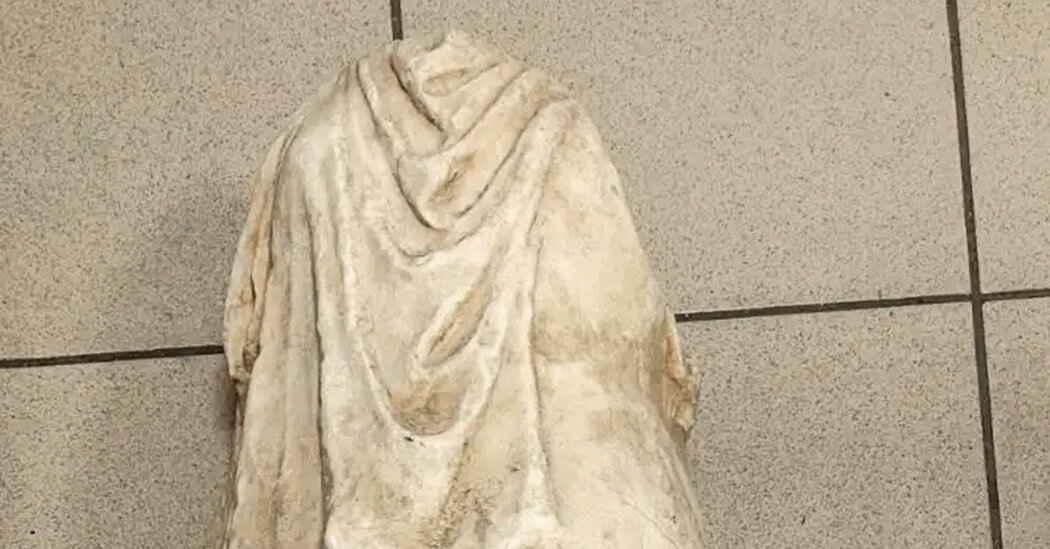On the night of January 18, a 32-year-old Greek man went to the police with an uncommon object he mentioned he present in a plastic bag amongst rubbish cans close to the northern metropolis of Thessaloniki.
It was a headless, armless statue depicting a feminine determine in a fluttering draped garment.
The police announced on Wednesday that the statue is believed to this point from the Hellenistic interval, after the demise of Alexander the Nice, from 323. and many others. n. is. till about 31 and many others. n. is.
The discover sparked an investigation by Greece’s crime, trafficking, antiquities and heritage safety models into its origins and the way it may need ended up within the trash.
Discovering historical artifacts in shocking locations will not be uncommon in a rustic with such wealthy historical past and archeology as Greece. Relics are sometimes discovered throughout development tasks, comparable to these to arrange for Olympics 2004 and excavations of the subway system.
“This isn’t the primary time” that civilians have handed over statues to police stations, Vassilis Tempelis, a spokesman for the tradition ministry, mentioned in an e mail on Wednesday.
The Ministry of Tradition has accomplished a preliminary examination of the statue and concluded that it falls beneath Greek antiquities safety legal guidelines, police mentioned. A 3-member committee will attempt to decide its composition and date.
AP said the statue is about 31 inches tall.
Dr. Burt Smithprofessor of classical archeology on the universities of Oxford College and Bilkent College in Turkey, mentioned the statue regarded like a small determine of a goddess.
“The small measurement is typical of such marble votives positioned on deities in sanctuaries or temples,” he mentioned in an e mail, basing his observations on official photographs of the statue.
“Individuals prayed to deities and made dedications to them in gratitude for his or her benevolence,” Dr Smith mentioned. “Small statues like this might be the costly dedication of a personal particular person.”
The clothes within the determine, depicting a heavy woolen garment in a single piece, is named a peplos by archaeologists and was the final clothes of the deities. However the arms and head of the statue had been misplaced previously.
“The arms might inform us what the determine is doing and what attributes it might be carrying,” he mentioned. And the pinnacle? “It was knocked down by the arms within the lengthy later historical past of the determine.”

